Thermaltake Bigwater 760i Water Cooler Review
The Drive Bay Unit
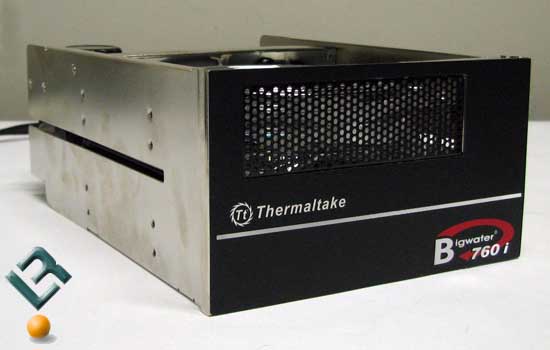
Looking at the front of the unit we can see the intake vent for the radiator fan. Whether or not the mesh will be open enough to provide decent flow for the cooler is still to be seen.
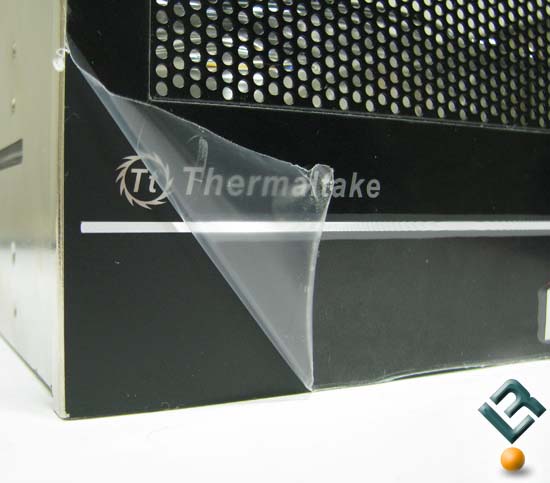
The finish of the front is protected by a plastic film that easily peeled off and left no residue.
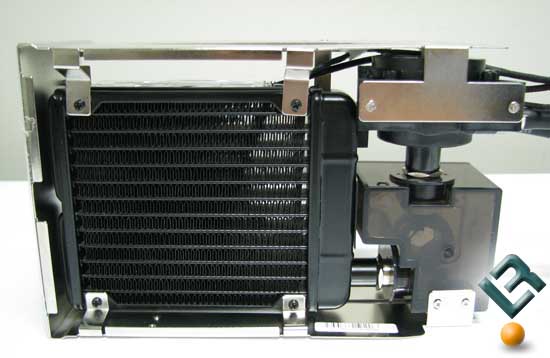
Looking from the bottom of the unit we can see the radiator, reservoir, and pump. The radiator tubes and fins are made from aluminum. To improve the performance of the radiator Thermaltake had implemented what they call Dimple Tube Technology (D.T.T).
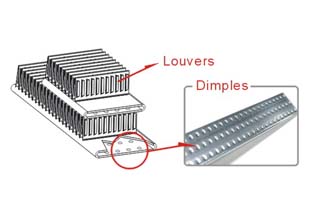
It is this dimple/louver combination that Thermaltake says makes their radiator better than the rest. The dimples create a vortex in the tubes that swirls the water, allowing more of the water to have contact with the tube walls. This, combined with the high density louvered fins, demonstrates the great improvements the Dimple Tube Technology makes on the radiator’s performance.
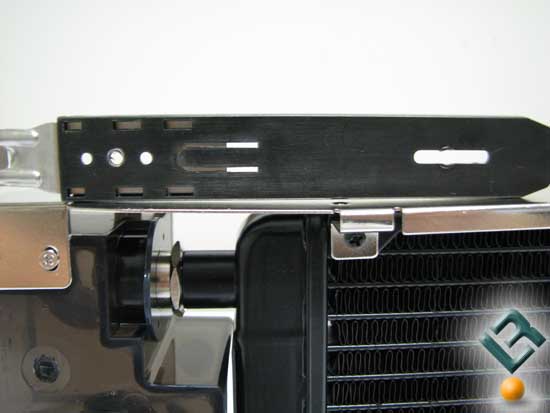
Looking closer the rear radiator mount I noticed that the side looked pulled in. I grabbed a drive rail and laid it on the side of the unit, and sure enough it was. It was the same on the other side as well. Let’s hope that doesn’t affect fitting into the case.
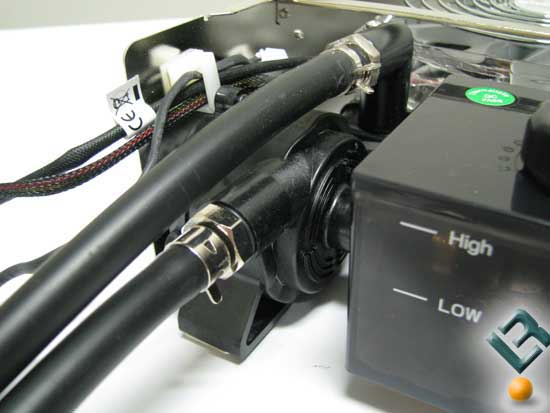
Looking from the back we can get a better look at the pump and reservoir. The reservoir seems a little small to me, only holding 130cc of coolant, but a quick look at some other kits on the market shows 130cc is the norm. The pump is rated at max flow of 500 L/hr. At that rate the fluid in the reservoir is changed out 64 times a minute. We can also see a pair of pre-installed black hoses.
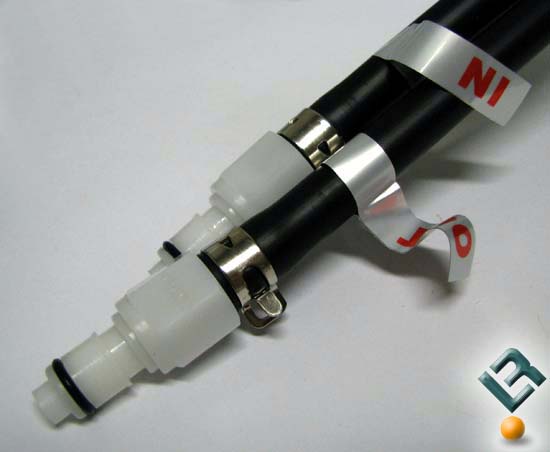
At the other end of those hoses are the pre-installed male QD fittings. These are what are called No Drip fittings. On the inside of the fittings is a spring loaded plunger. When the fitting halves are together the plungers are pushed open, as the fittings come apart the springs force the plungers closed and stop the flow. So, in theory, if the fittings come apart correctly there will be little to no coolant lost.
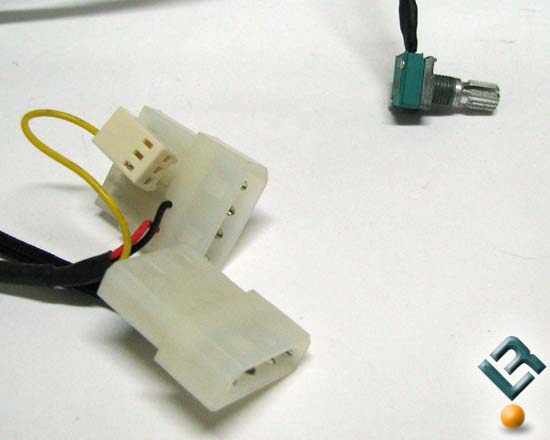
Power for the fan and pump comes from 4 pin molex connectors, and the fan speed is controlled by a small internal fan controller (top right of the image). There are a couple things I didnt care for in this arrangement. First, the fan power is from a 4 pin connector, off of that connector is a very short yellow lead that is for hooking to a fan header on your motherboard for RPM reporting. I would have much rather had a long standard lead from the fan with a standard fan power connector. The second is the speed controller for the fan. It is internal, so to adjust the fan you have to get into the case. It is also very short, so finding a place to stash it for the clean look and still get to it easily may be interesting.
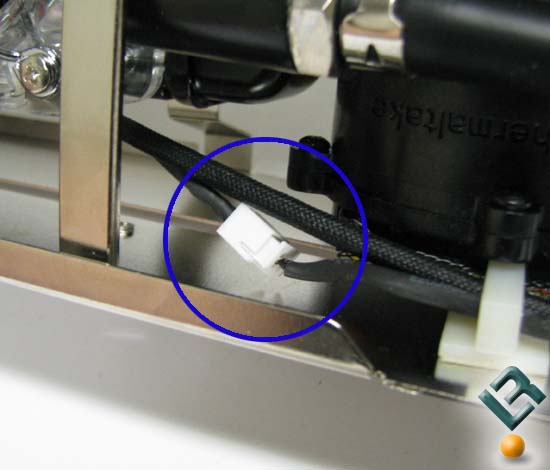
All is not lost though; there is a place where you can remove the 4 pin molex and the internal speed control that will allow you too hook it up to your fan controller. You may need to make alterations though, as the plug on the fan is a female — not the typical male plug.

Comments are closed.